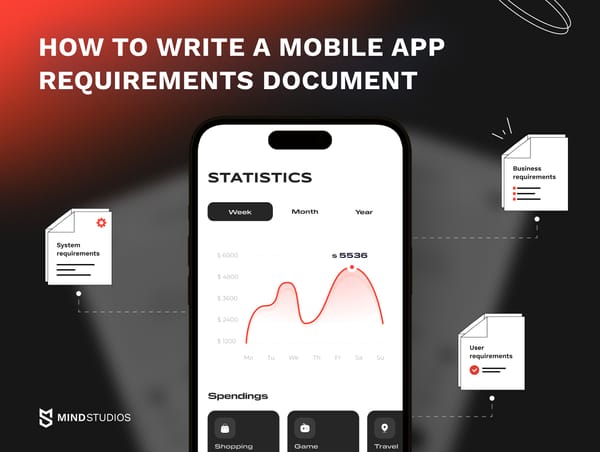Artificial intelligence in telemedicine holds a transformative power that can enhance experiences within the healthcare system for both medical professionals and patients.
The existing traditional healthcare systems are getting increasingly hectic due to the collision between growing healthcare demands, a lack of skilled workers, and insufficient resources. So, imagine the relief of a burnt-out physician in an understaffed, highly stressful environment getting empowered by an AI-driven assistant that can take care of appointment scheduling, administrative support, and other repetitive tasks, which allows them to focus on patient care.
Now, let’s teleport to another setting: for instance, the home of an older person living with a chronic condition that is becoming harder to manage. An AI-enhanced telemedicine platform can help them stick to a consistent medication intake schedule, learn about health tips tailored to their needs, and get emergency assistance when needed. Basically, such tools can feel like having an additional digital caretaker by the patient’s side.
These scenarios are just a few examples of how AI in telemedicine can benefit the main stakeholders within the healthcare system. In this article, we explore more use cases like that backed by real-life solutions and Mind Studios’ own experience in healthcare software development.
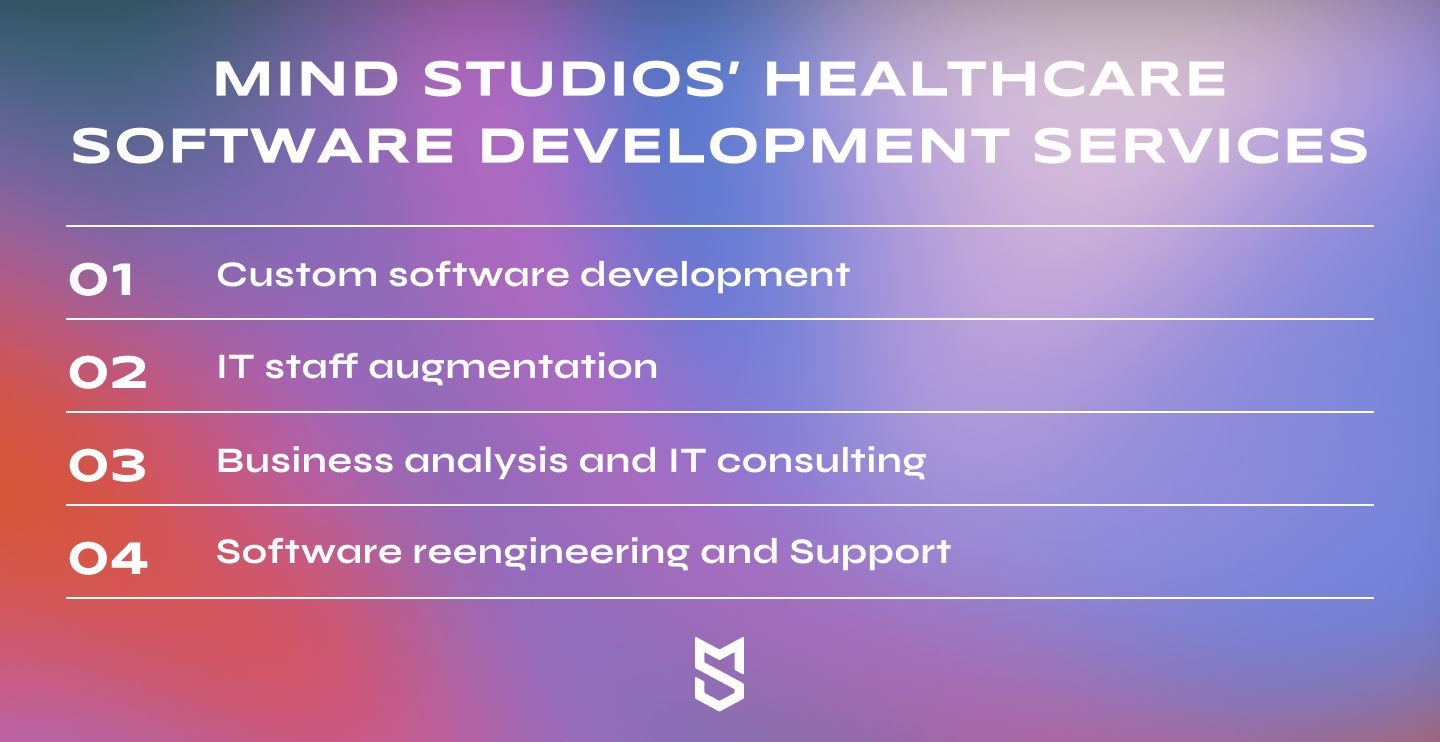
AI in telemedicine: A brief overview in numbers
Telemedicine became a massive leap in the healthcare industry’s development, allowing medical professionals and patients, including historically underserved ones, to connect remotely via video calls or chats. The upsurge in telemedicine also enabled healthcare organizations to offer more accessible prices for their services due to digital healthcare solutions being cheaper compared to traditional on-premises infrastructure.
In 2022, the value of the global telemedicine market reached $87.41 billion. The most widespread segments of the industry by application include teleradiology, which dominates the market, telepathology, telecardiology, telepsychiatry, and teledermatology.
However, while being a revolutionary invention, telemedicine platforms must be enhanced with other technologies — like IoT, cloud computing, and AI — to remain competitive and profitable. Let’s be honest, a hospital looking for a solution to help them deal with staff shortages is likely to choose a multi-functional AI-driven solution that can cover more than basic tasks like appointment scheduling.
Utilizing AI and ML (machine learning) in healthcare can answer several critical challenges in the industry, including personnel shortages, the demand for treatment personalization, administrative efficiency, and more. Therefore, healthcare organizations increasingly invest in artificial intelligence.
According to Precedence Research, the global AI in healthcare market size was valued at $15.1 billion in 2022 and is expected to surpass around $187.95 billion by 2030. Moreover, the software solutions segment here held the largest revenue share of 40.5% in 2022. This speedy growth is attributed to the increasing penetration of AI-based software in various healthcare applications, including telehealth ones, which became increasingly popular in 2020.
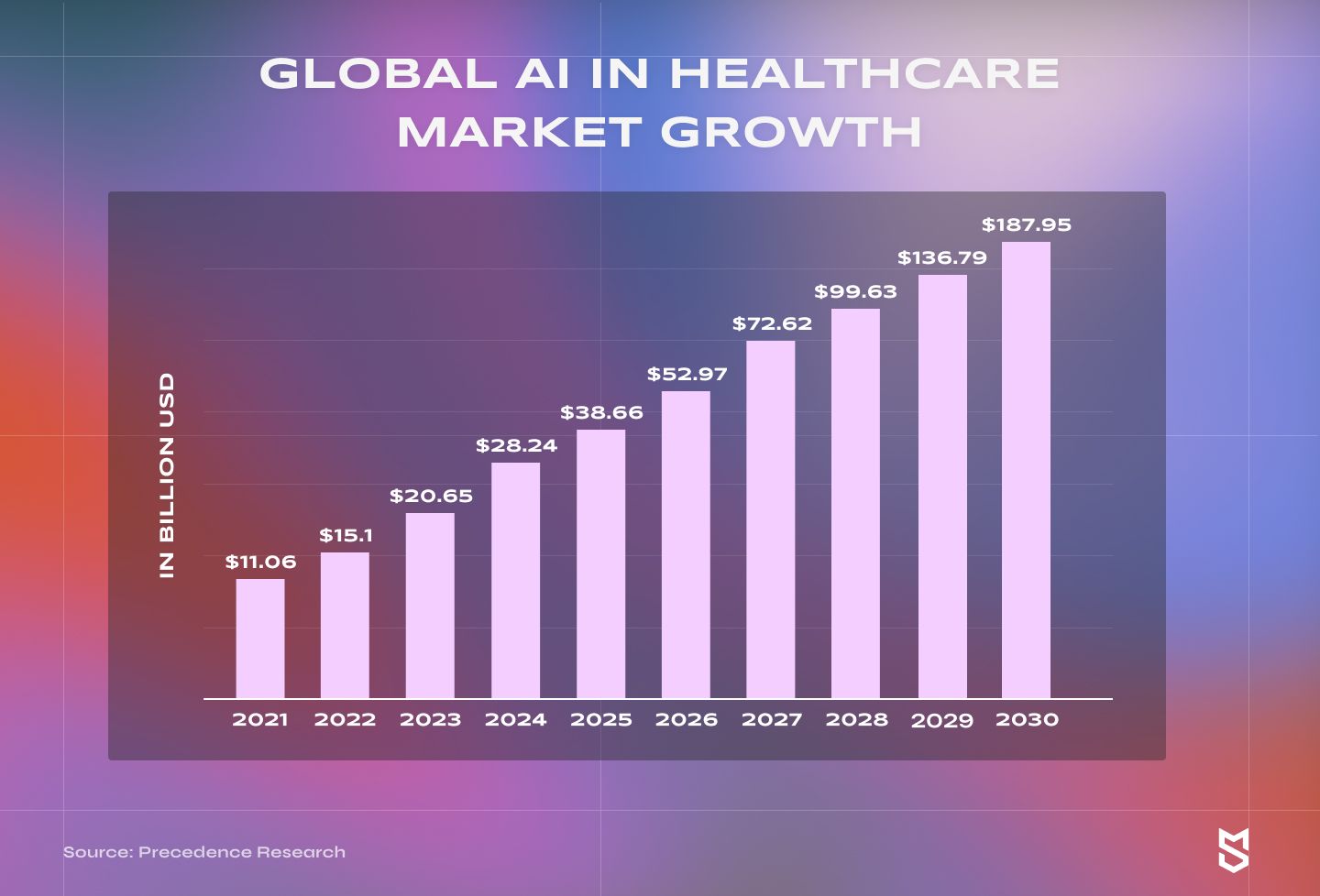
It’s worth noting that artificial intelligence is now considered one of the biggest growth opportunities for telehealthcare. As stated in the report on the telemedicine industry by Facts & Factors, AI-powered solutions provide medical professionals with access to more data-driven insights essential for making accurate, real-time decisions and improving patient care and experience.
AI use cases in telemedicine apps
The continuously growing markets of both telehealth and AI in healthcare are a good indicator these sectors are worth investing in. But how is AI used in telemedicine exactly? We’ve collected the five most common use cases backed by real-life telehealth examples.
Diagnostics
One of the most compelling powers of AI algorithms is their ability to quickly analyze vast datasets, including medical images, patient histories, and clinical notes, to provide accurate insights. And while the final decisions must be left to human professionals, especially in complex cases, using artificial intelligence in telehealth data processing and analysis speeds up the diagnostic process, increases its accuracy, and enables timely interventions.
Example: Powered by AI, Hello Heart is a comprehensive digital health platform designed to assist individuals in managing hypertension (high blood pressure). This user-friendly mobile app connects with blood pressure monitoring devices, enabling patients to regularly measure their blood pressure and log their readings into the system.
The platform uses AI-driven algorithms to provide personalized insights, track trends, and offer recommendations for lifestyle changes and medication adherence. The app users can also share their data with healthcare providers for remote monitoring and collaborative care, reducing risks of adverse events.
Personalized treatment plans
One-size-fits-all treatment approaches are becoming obsolete, replaced by tailored, high-quality patient care. Among other reasons, AI in telemedicine is becoming more widespread because it excels at crafting personalized treatment plans based on a user’s unique medical journey, genetics, lifestyle, and other data. Such treatment recommendations are often not only more effective but also more mindful of the patient’s comfort, leading to fewer side effects.
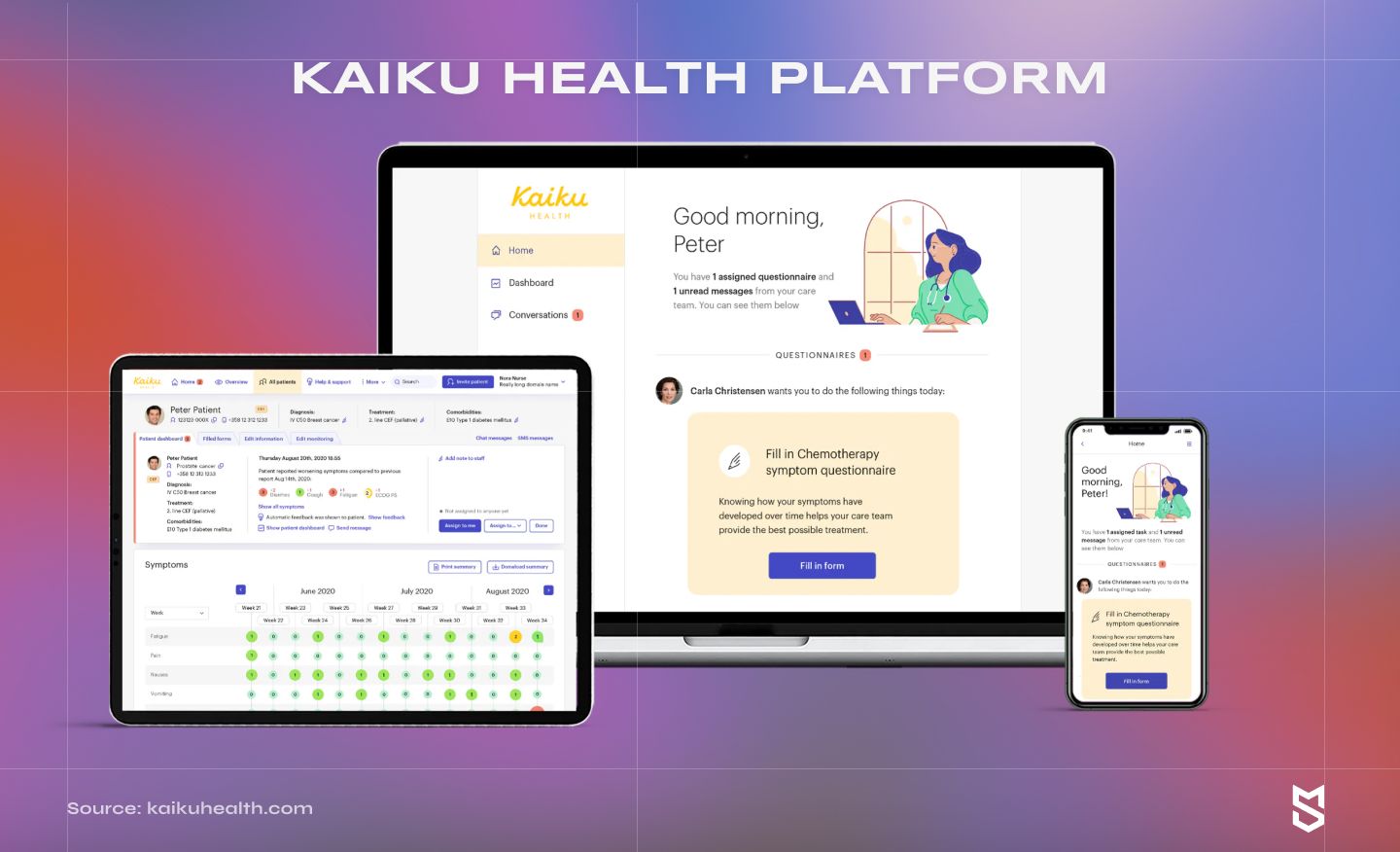
Example: AI-powered telehealth platforms can be built as standalone products and solutions that become part of larger healthcare ecosystems. For instance, Kaiku Health is an AI-enabled platform that provides cancer clinics with patient-reported outcome monitoring and intelligent symptom tracking, thus automating several tasks previously done by healthcare workers.
The platform’s algorithms screen symptoms, alert care teams when necessary, and provide support for cancer patients, enabling early interventions and facilitating value-based healthcare.
In addition to cancer care, the company works in other therapy areas like fertility treatments and preventive health care. Currently, over 30 European hospitals and clinics use Kaiku Health to monitor their patients, reduce manual work, and prioritize clinical actions more effectively.
Telemonitoring
One of the primary missions of telemedicine is to make healthcare accessible to all kinds of patients, including those facing mobility challenges or living in remote areas. Here's where AI can become a true lifesaver. AI-powered devices and apps help healthcare professionals (HCPs) maintain access to crucial patient data and receive alerts when anything looks out of the ordinary. As a result, patients and medical workers can engage in more proactive care, preventing unnecessary hospital visits and ensuring continued well-being.
Example: Binah.ai, an AI-powered health data platform, is a perfect example of how artificial intelligence assists HCPs in remote monitoring and care. The solution enables its users to measure various biomarkers using devices like smartphones, tablets, and laptops.
The SDK (Software Development Kit) developed by Binah.ai allows their software to be integrated into any app or workflow. The platform’s AI algorithms can extract essential health metrics, such as heart rate, respiratory rate, blood oxygen saturation, and more, from a user's facial video stream. This non-invasive approach enables patients to monitor their health virtually from anywhere with a camera-equipped device and an internet connection.
Management of chronic diseases
Living with chronic conditions such as diabetes, heart disease, and asthma is a daily challenge, demanding constant monitoring. Fortunately, the adoption of AI in healthcare makes this task more manageable. AI-powered telehealth platforms provide patients with tools for self-care, tailored recommendations, medication reminders, and practical lifestyle tips, leading to better disease management and long-term health. Moreover, they typically connect patients with healthcare providers when human intervention is necessary.
Examples: One of the most successful products in this niche is Teladoc, a telehealth platform that offers primary care, mental health, and chronic condition management services. For this, Teladoc Health utilizes AI and ML technologies to provide symptom assessment, enable predictive analytics for identifying potential health issues, and personalize patient interactions.
As of 2023, Teladoc has raised $172.9 million in funding and already delivers care in 125 countries in more than 20 languages, partnering with employers, hospitals, and health systems. Recently, the company announced it plans to leverage generative AI tools by using Nuance's latest voice-enabled medical scribe application integrated with OpenAI's GPT-4.
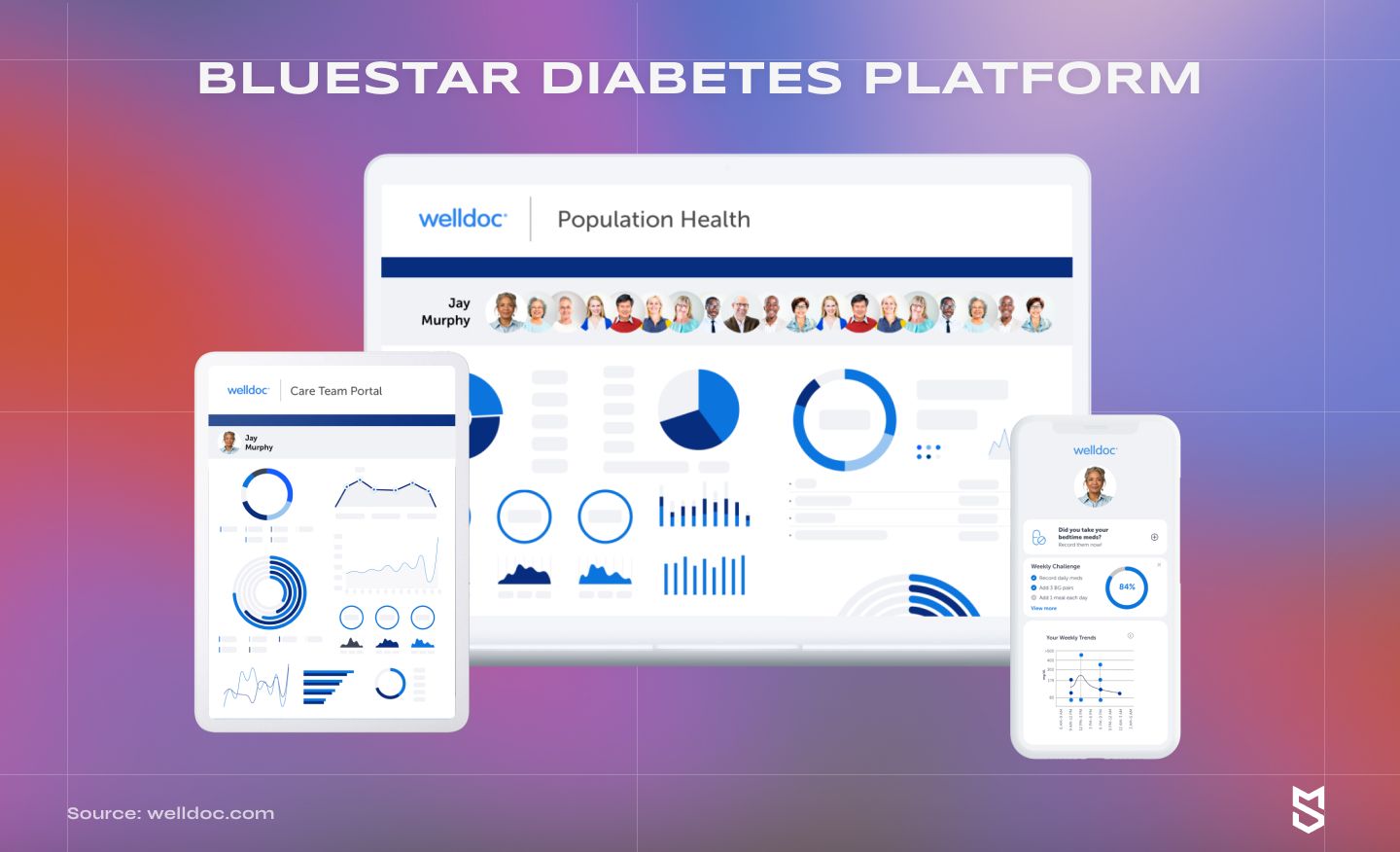
While Teladoc provides a broad spectrum of services, there also are AI-powered chronic management telehealth platforms for patients with specific conditions. BlueStar Diabetes by Welldoc, for instance, offers FDA-cleared diabetes support and real-time AI coaching to help patients manage their condition.
The platform provides guidance on blood glucose management, medication adherence, and lifestyle choices. Moreover, BlueStar connects with various CGMs, enabling HCPs to view their patients’ progress reports and remotely optimize care plans accordingly.
Patient engagement
Fostering patient engagement on telemedicine platforms empowers users to actively participate in their healthcare journey and share vital information with healthcare providers. This naturally leads to better adherence to treatment plans and recommendations, thus improving health outcomes and patient-provider relationships. And that is where AI integrated into telehealth platforms comes in handy.
AI-driven chatbots and virtual assistants help patients interact with their healthcare providers more effectively by providing immediate responses to patient queries, offering health tips, monitoring medication adherence, etc. Such tools foster continuous communication and support, encouraging patients to take an active role in their care.
Examples: A vivid example of patient engagement tools is Sensely, a chatbot-based platform designed to assist insurance plan members and patients. The company's platform leverages conversational AI and virtual assistant technology to create a user-friendly interface for patients to interact with. By combining human empathy and technology's efficiency, Sensely enhances patient-provider communication for insurance, pharmaceutical, and hospital clients.
Another example is Healthily, a medically-approved AI-based app designed to promote self-care. The platform uses responsive AI tools that assist users in symptom checking, health assessments, and health goal tracking. It also offers a library of medically verified articles and tips for managing various health conditions.
The app's ultimate goal is to educate users about their health, encourage proactive self-care, and provide tools for setting and tracking health goals. It also connects users with healthcare professionals and telemedicine services for more in-depth consultations when needed, so critical decisions are still made by human professionals.
Challenges of AI-based telemedicine
In addition to the benefits mentioned in the previous section, projects focused on telehealth using AI and ML face multiple difficulties connected to implementation and post-launch management. Let’s look into the most common AI-related challenges and possible solutions to them.
AI explainability
Transparency of telehealth AI is a pressing issue that must be addressed. Both healthcare workers and patients need to understand the reasoning behind AI’s conclusions, especially when making critical decisions like treatment suggestions. Without clear insights into the logic behind AI-generated results, such tools would unlikely be trusted and thus adopted in telemedicine.
Healthcare organizations looking to integrate artificial intelligence into their platforms must employ transparent AI models with interpretable decision-making processes. This involves using AI algorithms that provide clear explanations for their decisions through visualization tools, feature importance scores, and decision trees.
Additionally, the development teams working on AI integration can adopt techniques like LIME (Local Interpretable Model-agnostic Explanations) and SHAP (SHapley Additive exPlanations) that can help make complex AI models more interpretable by highlighting the factors that influence their decisions.
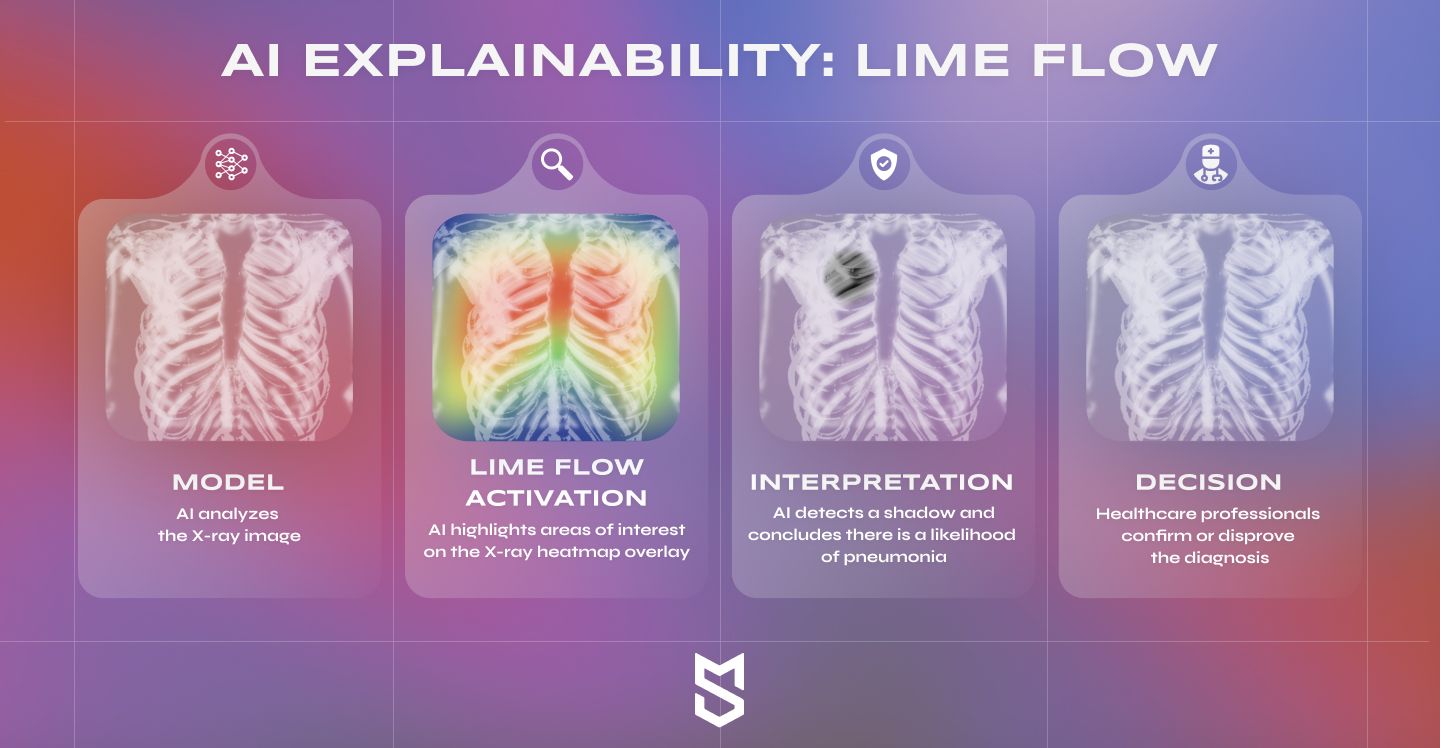
Data preparation
Training AI models in telemedicine demands high-quality data, which entails gathering, cleansing, and annotating medical information. The latter task requires domain expertise to correctly label images, records, and patient information. Moreover, this challenge becomes even more complicated when data is siloed across different healthcare systems and formats, requiring meticulous standardization.
To deal with this issue, healthcare organizations must invest in meticulous data management strategies, data collection, cleansing, and annotation efforts and explore data-sharing partnerships with other healthcare institutions to access a broader and more diverse dataset.
Governance of AI
The healthcare landscape is highly dynamic, and AI systems need to keep up with the latest medical research, treatment protocols, and other best practices. Therefore, organizations managing the technology must continuously test AI models, monitor their performance, and retrain them when necessary. AI governance helps establish accountability, ensure continuous monitoring and adaptation to changing healthcare needs, manage risks, and maintain quality assurance.
The optimal solution here would be to develop a robust governance framework for AI used in a telemedicine platform. This framework can include routine performance assessments, continuous monitoring, and mechanisms for updating AI models based on evolving medical knowledge.
Data security
Powered by AI or not, telemedicine involves exchanging sensitive patient data, which means ensuring the security and privacy of this data is of critical importance. The problem here is that the integration of AI can make this challenge even more complex due to increased data volume, data sharing and integration from diverse sources, potential vulnerabilities in third-party AI services, and the susceptibility of AI systems to cyberattacks.
To safeguard patient data while leveraging AI technology, owners of AI-enabled telemedicine platforms must prioritize robust cybersecurity measures, including data encryption, access controls, regular security audits, and incident response plans. Additionally, it’s crucial to foster a culture of data security awareness among staff and patients.
Regulations compliance
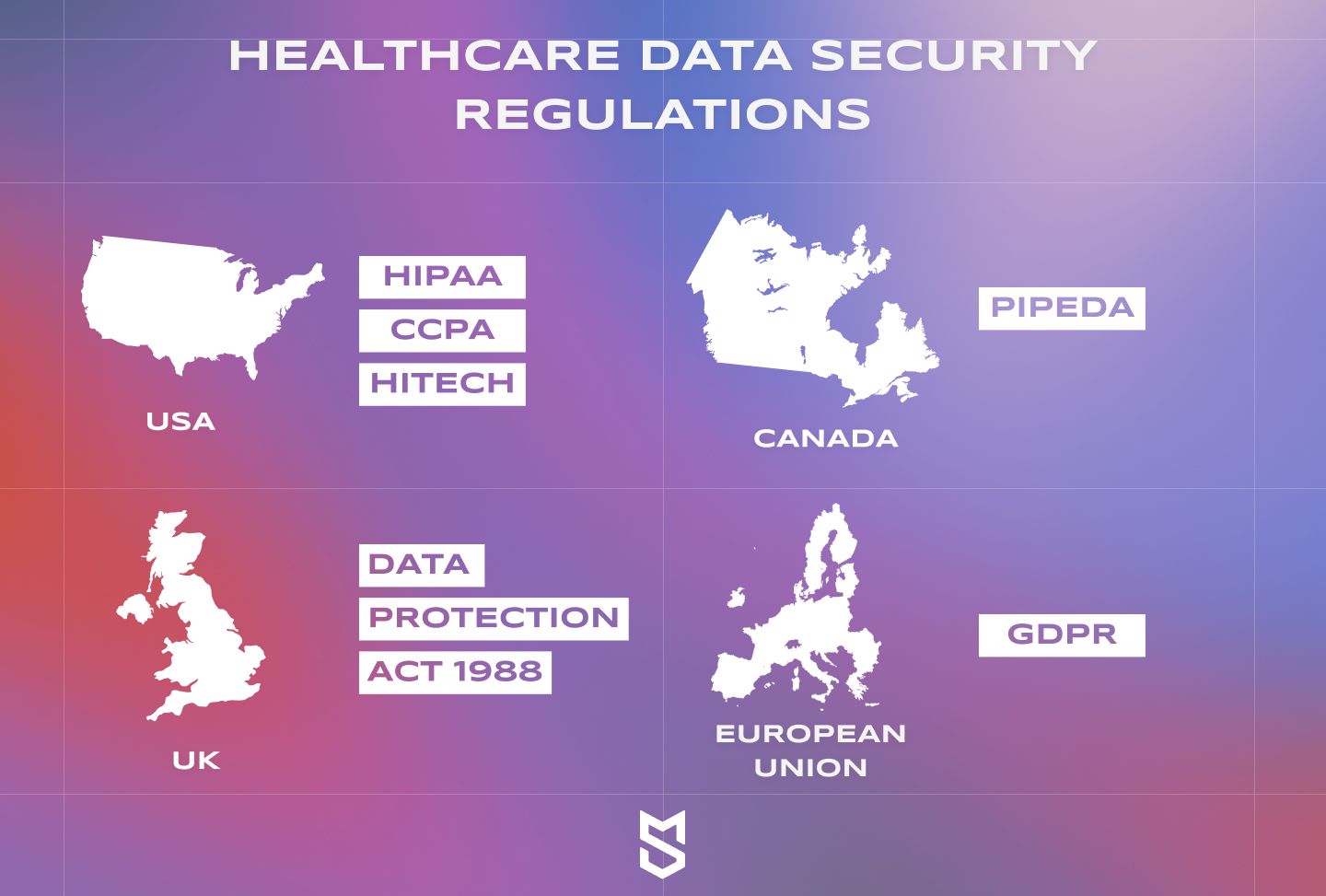
No matter the type of healthcare software you manage, complying with healthcare regulations and standards is a challenge on its own, with or without AI integration. Navigating regulations like HIPAA in the US, GDPR in Europe, and other regional laws requires meticulous attention to detail and expertise.
The broad adoption of AI technology is a relatively new phenomenon. Therefore, most countries don’t have regulatory frameworks yet to govern artificial intelligence in healthcare specifically. However, many are working on it, including the EU countries, so it’s only a matter of time until relevant legislative regulations on the use of AI start functioning.
Healthcare organizations need to stay informed about these evolving healthcare regulations and collaborate with legal and compliance experts to navigate the intricacies of data protection laws. This will help them ensure compliance throughout AI development and deployment.
To learn more about the industry's current regulatory landscape, check out our article on tackling the challenge of AI regulations in healthcare.
Autonomous AI or augmented AI
Determining the degree of AI systems' autonomy in critical healthcare decision-making is a delicate matter. While artificial intelligence can be helpful to healthcare professionals, human supervision remains crucial. For instance, an AI model can process vast amounts of medical data to extract relevant insights much faster than a healthcare professional. However, human confirmation of the suggested diagnosis and treatment plan is irreplaceable, especially when it comes to complex or rare conditions.
Besides, AI might not be able to take into account the human context of a specific case. For example, doctors' recommendations for a patient's treatment plan can differ from AI's in end-of-life care decisions. While AI is likely to focus on clinical data and statistical probabilities, a healthcare professional will also consider the emotional and psychological well-being of the patient and their family to recommend the best approach, even if it doesn't provide the best chance of survival.
To solve this AI challenge, we recommend healthcare organizations establish clear protocols for when and how AI systems should operate autonomously. Keep in mind that the use of AI in healthcare is most effective when organizations follow a collaborative approach.
Ethical AI
AI models are trained on data generated by humans, which, unfortunately, means they can also be biased and discriminatory against certain demographics, leading to unequal healthcare opportunities and patient outcomes.
Ethical integration of AI involves not just safeguarding patient privacy but also ensuring unbiased algorithms and addressing issues like algorithmic favoritism. To do so, healthcare providers running AI-empowered telehealth platforms must:
- Implement strict ethical guidelines
- Adhere to fairness and bias mitigation practices during AI development, such as re-sampling underrepresented groups, auditing datasets for bias, and regularly re-evaluating AI models
- Continuously monitor AI systems for discrimination and adjust algorithms accordingly
- Engage diverse teams in AI development to reduce biases in the data and decision-making processes.
Mind Studios as your telemedicine development partner
One of the most significant market restraints of combining telehealth and artificial intelligence is high cost, especially when a healthcare organization chooses to go with a custom AI solution. Implementing AI in telemedicine requires investment in AI algorithms, infrastructure, data storage, cybersecurity measures, and compliance efforts to ensure responsible use of technology.
On top of that, while AI is on the rise, it is still hard to find and retain skilled professionals who specialize in this technology since the labor demand currently exceeds the supply. Hiring an in-house specialist with expertise in AI in telehealth is not just a challenge but a substantial financial investment. For smaller healthcare organizations and HealthTech companies, the benefits of custom in-house telehealth AI development might simply not be worth the expenses.
In such cases, the best way to invest in AI and telemedicine powered by it might be outsourcing the AI implementation to a tech partner with reasonable rates and expertise to customize a ready-made AI model instead of building one from scratch.
Since healthcare is one of our company’s focus industries, Mind Studios also worked with several telehealth projects over the years. In our experience, tailoring ready-made AI solutions to match the needs of a specific platform is a viable option for organizations that want to leverage the benefits of this technology without investing a fortune. Our outsourcing team already worked with training a pre-made AI model on our client’s data, and the approach proved to be effective.
At Mind Studios, we understand the importance of cost-effectiveness in healthcare technology projects. Being mindful of our clients' needs and resources, we are ready to use our experience in the healthcare industry and AI customization to help you leverage the benefits of AI in telemedicine while keeping the project profitable.
Conclusion
The use of artificial intelligence in telehealth and healthcare in general is about empowerment, not replacement. No AI tool can substitute medical workers’ compassionate hearts and out-of-the-box approach to treating patients. However, such platforms can and should be used as tireless assistants in all kinds of time- and resource-consuming tasks, from administrative processes to data analysis and remote patient monitoring.
For healthcare professionals, AI in telemedicine provides a chance to focus on building trustworthy, mutually beneficial relationships with their patients. For patients, the technology gives hope for more accessible and efficient healthcare services. And for executives in the field, it’s a tool to cut costs and tackle issues like worker burnout and staff shortages.
We understand that artificial intelligence and machine learning come with numerous complex implementation challenges, and navigating them can be overwhelming, especially at the beginning of the journey. Mind Studios is happy to support you in this endeavor and take care of the software development and integration part of the project. Contact us for a free consultation, and together, we can work out the optimum healthcare AI implementation strategy to strengthen your organization with innovation.

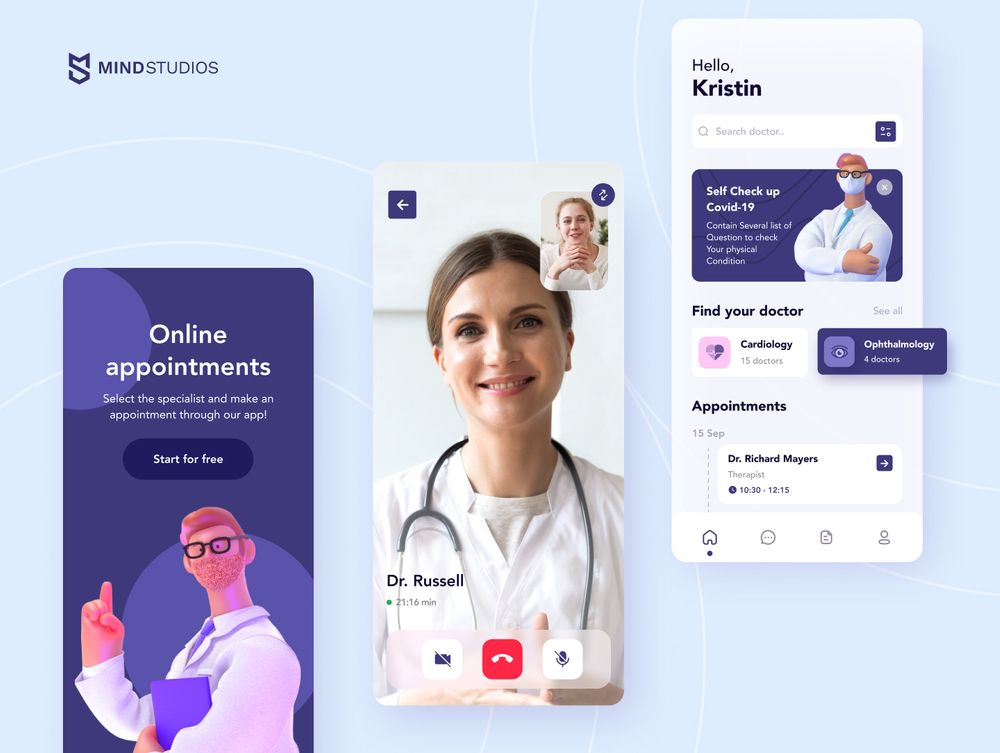
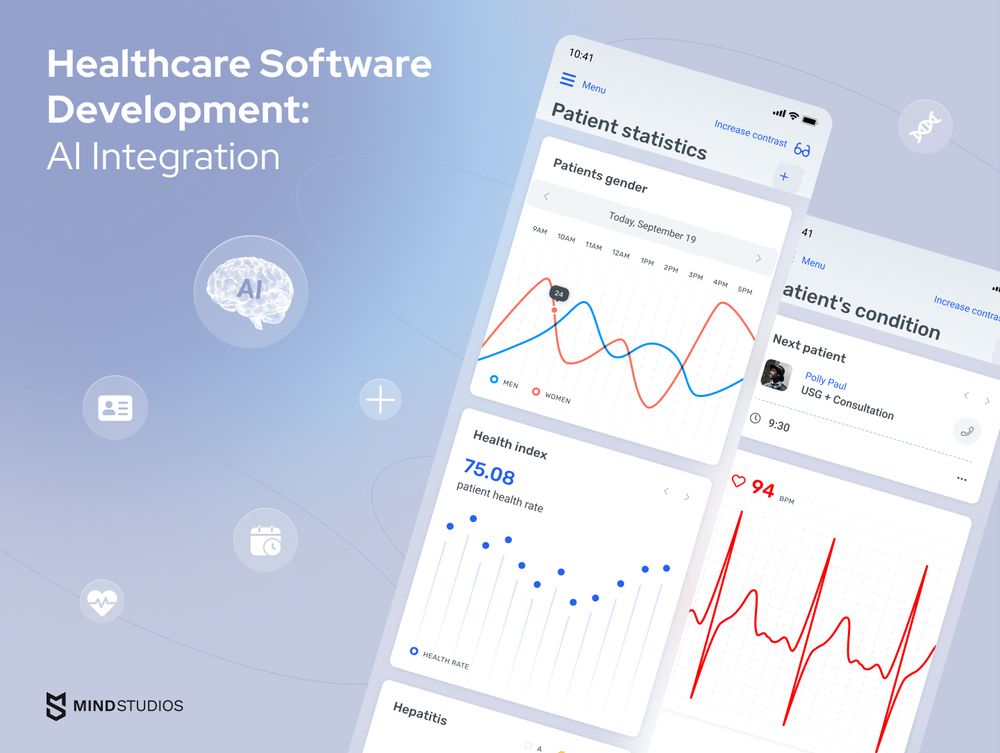

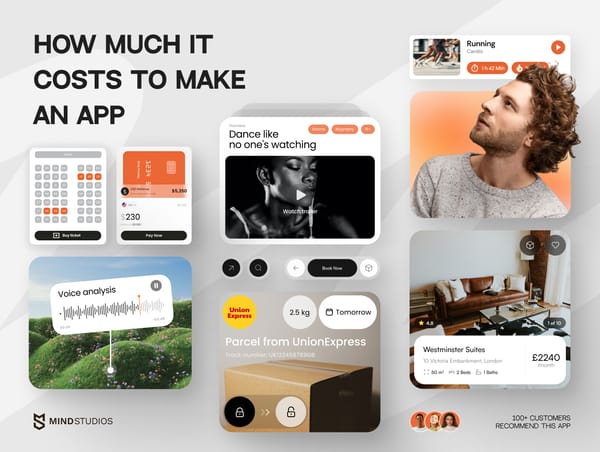

![How to Create an On-Demand Medicine Delivery App [Expert Guide]](https://themindstudios.com/blog/content/images/size/w600/2025/03/IMG-1-Cover-6.jpg)

